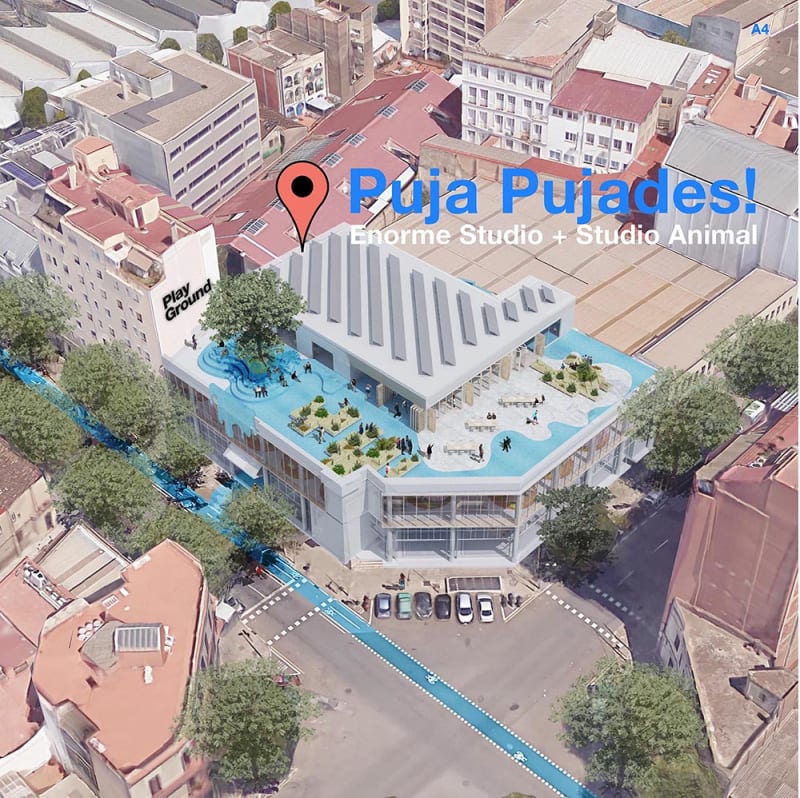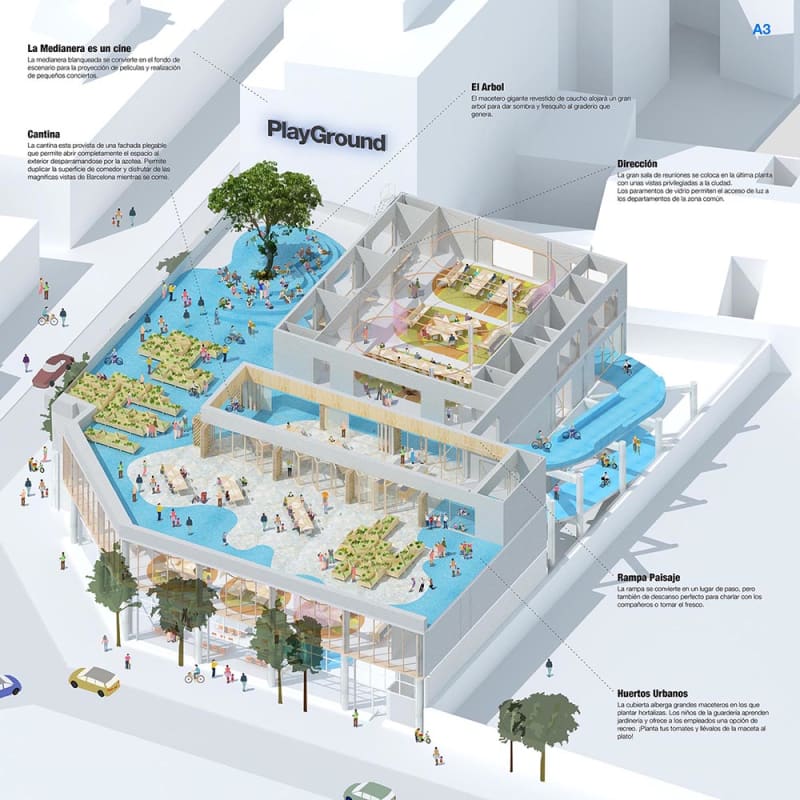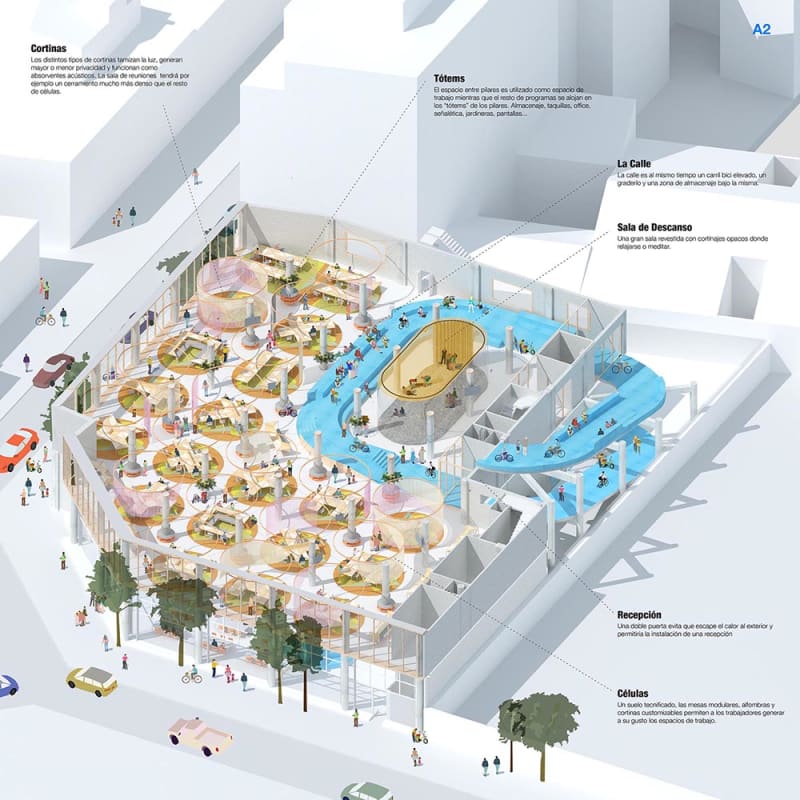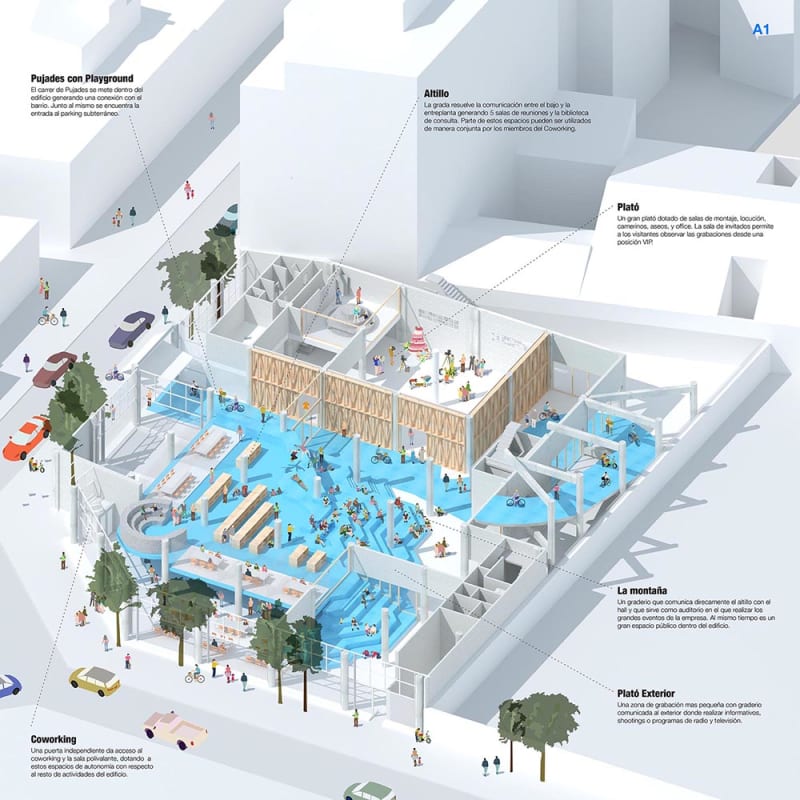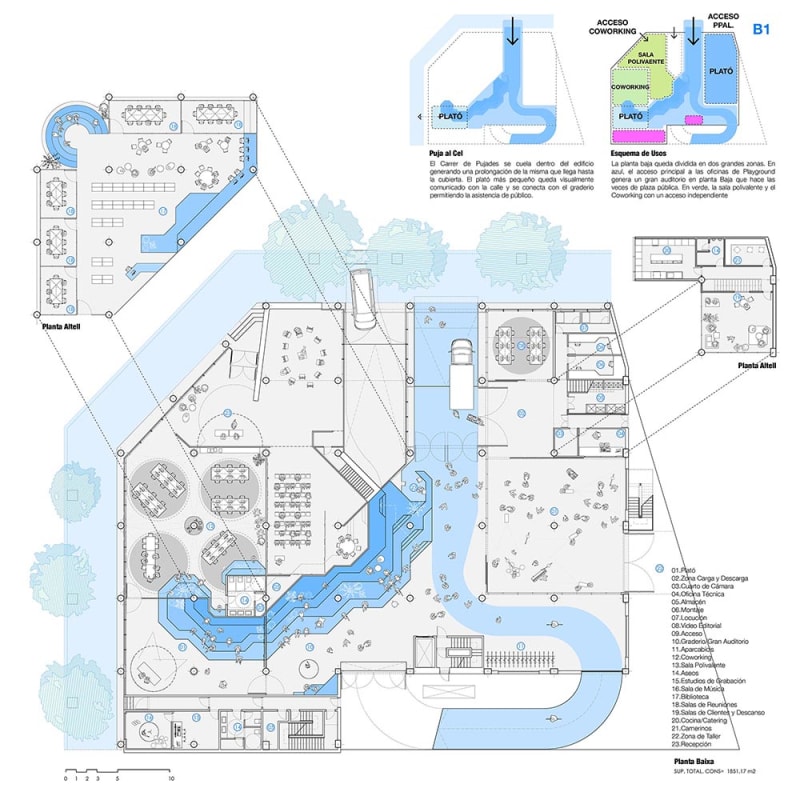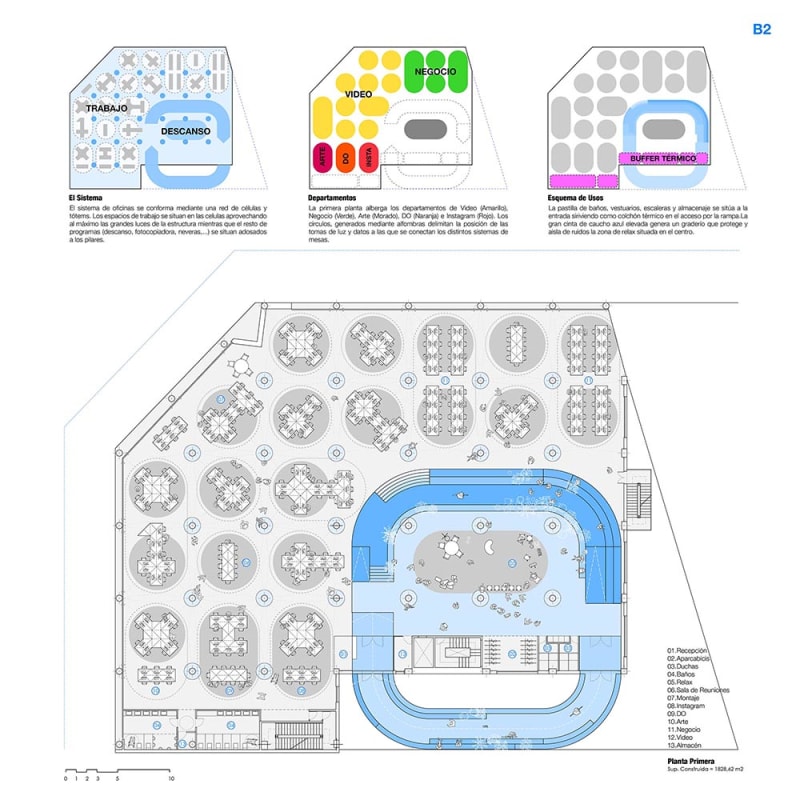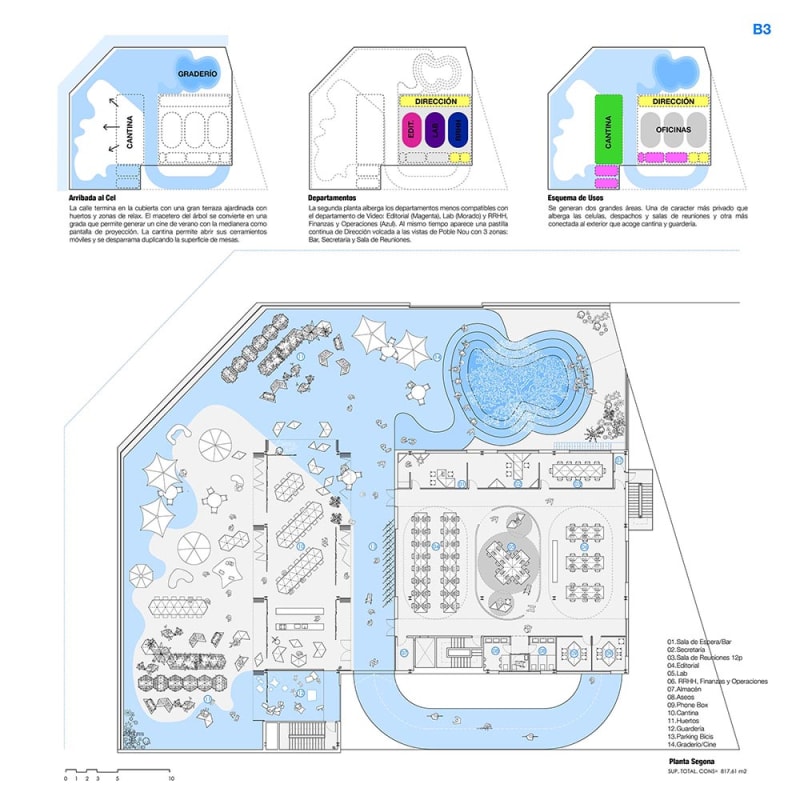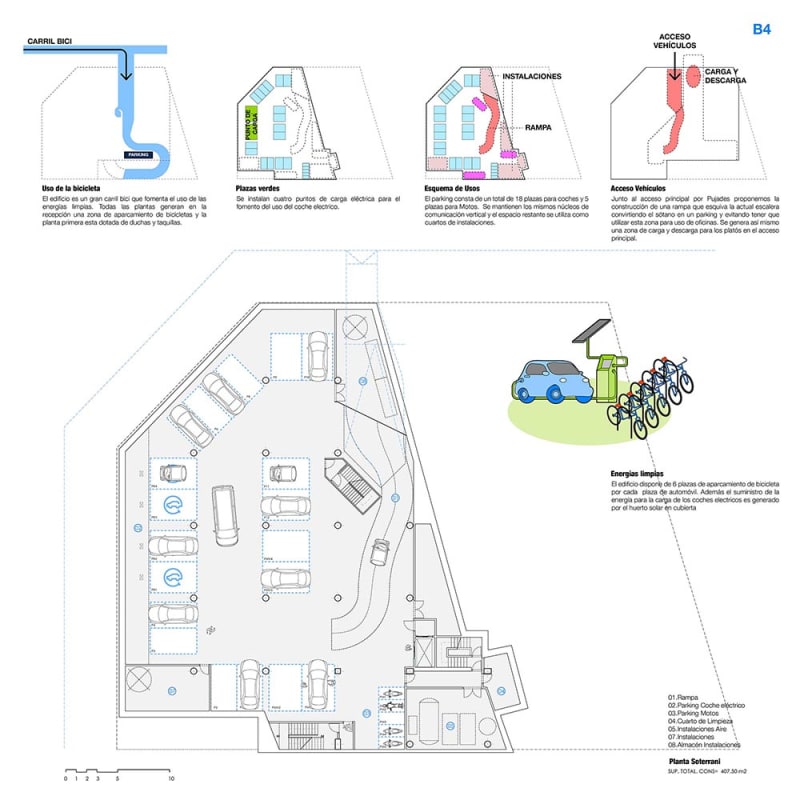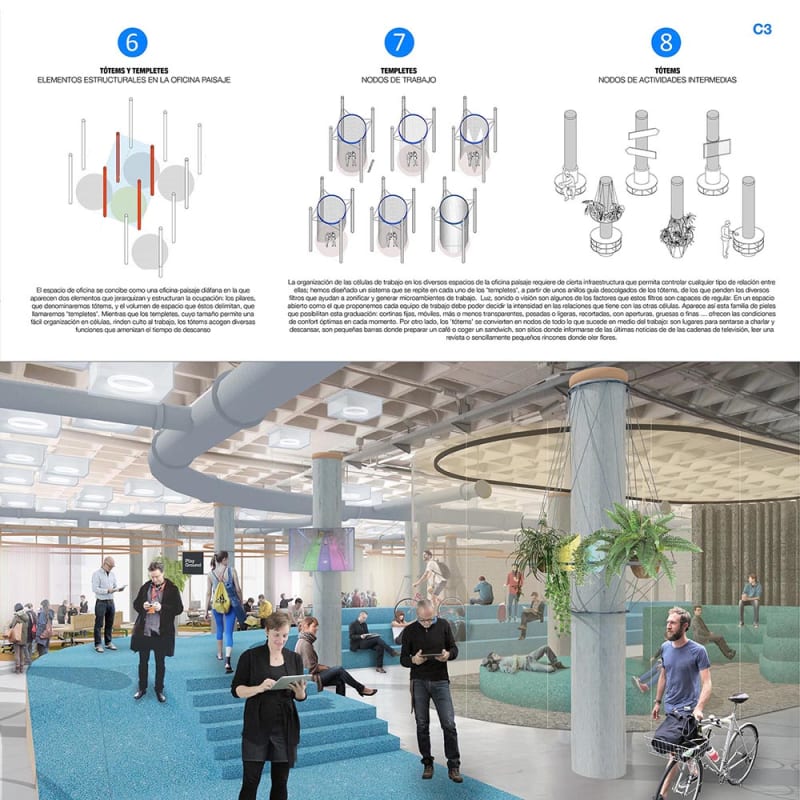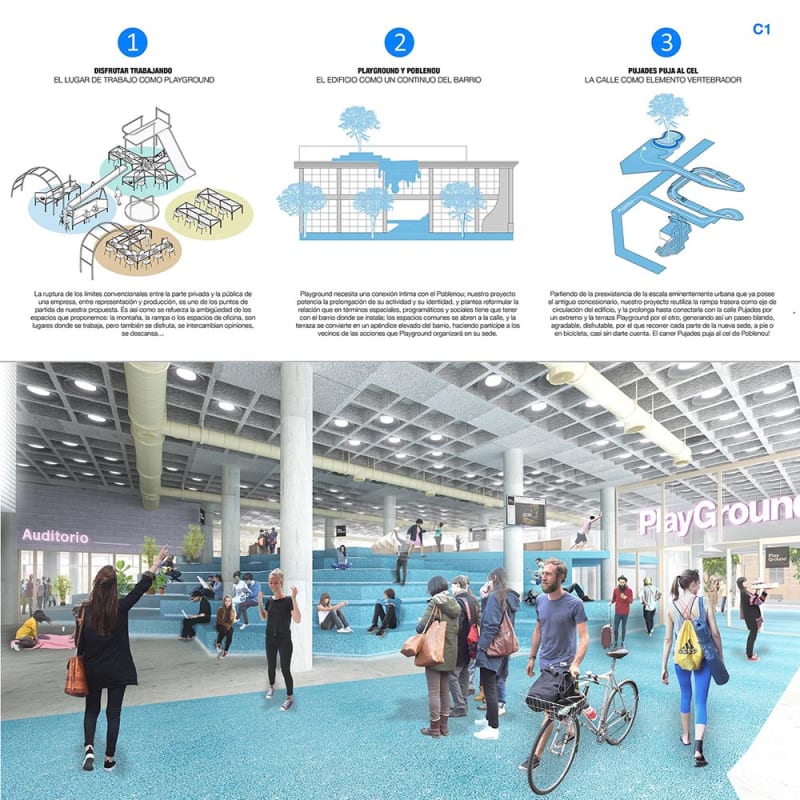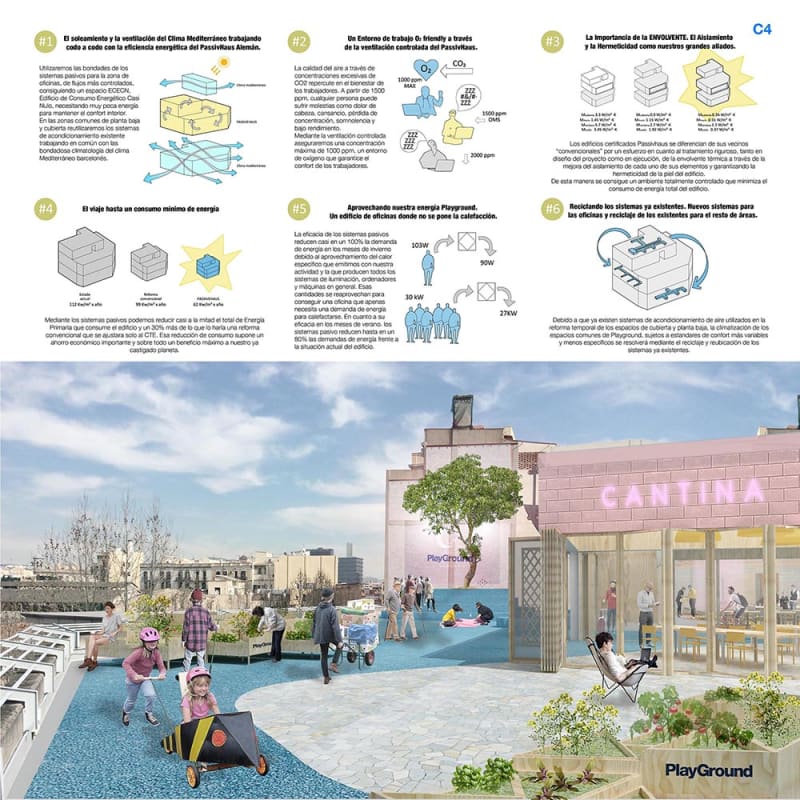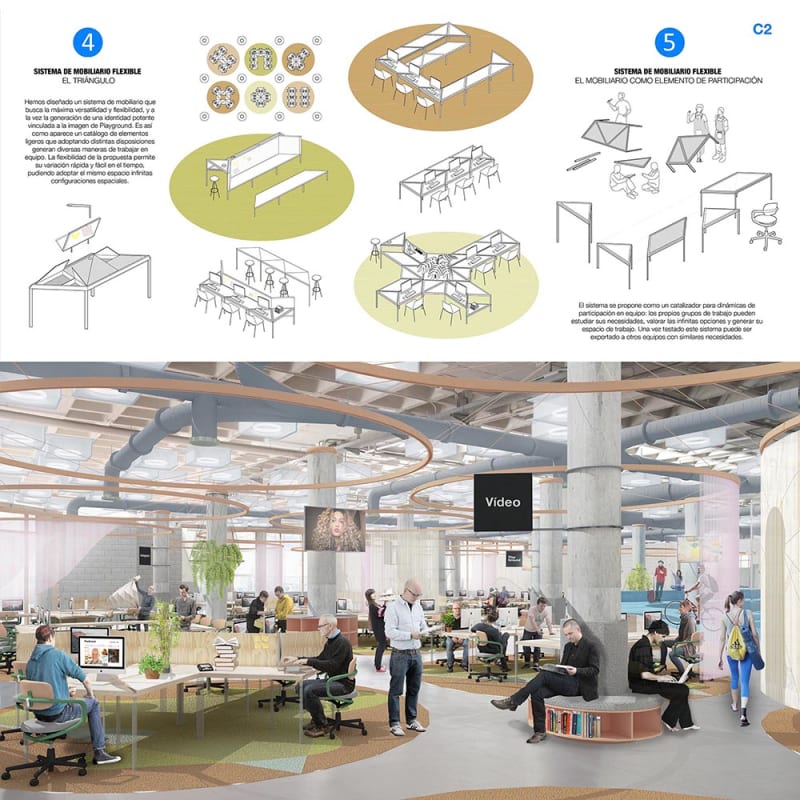ENJOY WORKING: THE WORKPLACE LIKE PLAYGROUND.
The breaking of the conventional limits between the private and the public part of a company, between representation and production, is one of the starting points of our proposal. This is how the ambiguity of the spaces we propose is reinforced: the mountain, the ramp or the office spaces are places where you work, but you also enjoy yourself, exchange opinions, rest …
PLAYGROUND AND POBLENOU: THE BUILDING AS A CONTINUOUS NEIGHBORHOOD.
Playground needs an intimate connection to Poblenou; Our project enhances the prolongation of its activity and its identity, and proposes to reformulate the relationship that in spatial, programmatic and social terms it must have with the neighborhood where it is installed; the common spaces open onto the street, and the terrace becomes an elevated appendix to the neighborhood, involving the residents in the actions that Playground will organize at its headquarters.
THE STREET AS A VERTEBRATING ELEMENT OF THE BUILDING.
Starting from the preexistence of the eminently urban scale that the former concessionaire already owns, our project reuses the rear ramp as the axis of circulation of the building, and extends it until connecting it with Pujades street on one end and the Playground terrace on the other, generating thus a soft, pleasant, enjoyable walk, through which you can visit each part of the new headquarters, on foot or by bicycle, almost without realizing it. Carrer Pujades bids the cel of Poblenou!
TOTEMS AND TEMPLETES
The office space is conceived as a diaphanous office-landscape in which two elements appear that hierarchize and structure the occupation: the pillars, which we will call totems, and the volume of space they delimit, which we will call ‘templetes’. While the templets, whose size allows easy organization in cells, worship work, the totems host various functions that liven up the rest time.
TOTEMS
The totem is a node of intermediate activities, that is, what happens in the office that is not strictly work, trying to enhance the fluid relationship between the different members of the cells and teams. Different elements adhere to them, forming a wide catalog of places of relationship: armchairs, refrigerators, signage, coffee machines, plants, screens …
FILTERS
The organization of the work cells in the various spaces of the landscape office requires a certain infrastructure that allows controlling any type of relationship between them; We have designed a system that is repeated in each one of the ‘templates’, starting with guide rings off the totems, from which the various filters hang that help to zonify and generate working microenvironments. Light, sound or vision are some of the factors that these filters are capable of regulating. In an open space like the one we propose, each work team must be able to decide the intensity of the relationships it has with the other cells. Thus appears this family of leathers that make this graduation possible: fixed, mobile curtains, more or less transparent, heavy or light, trimmed, with openings, thick or thin … they offer optimal comfort conditions at all times.
THE TRIANGLE SYSTEM
We have designed a furniture system that seeks maximum versatility and flexibility, and at the same time generating a powerful identity linked to the Playground image. This is how a catalog of light elements appears that adopting different provisions generates different ways of working as a team. The flexibility of the proposal allows it to be changed quickly and easily over time, and infinite spatial configurations can adopt the same space.

